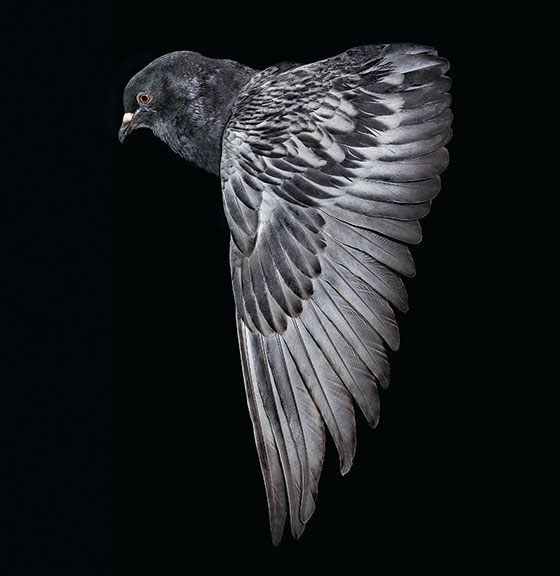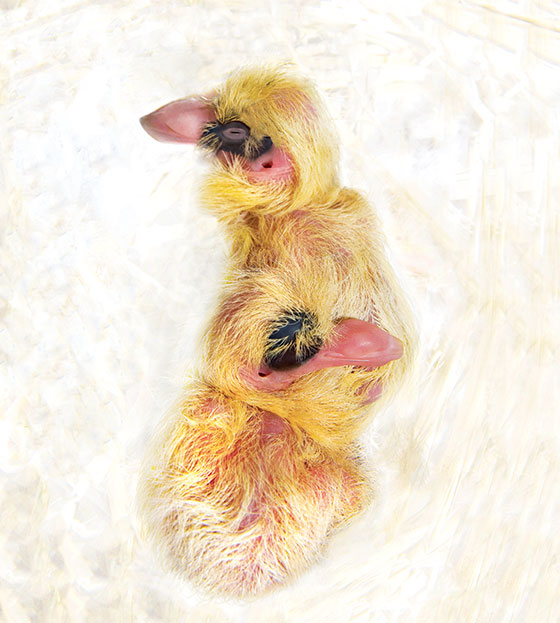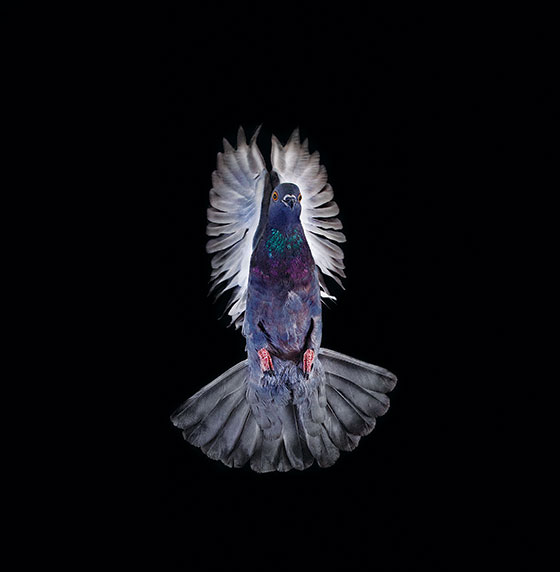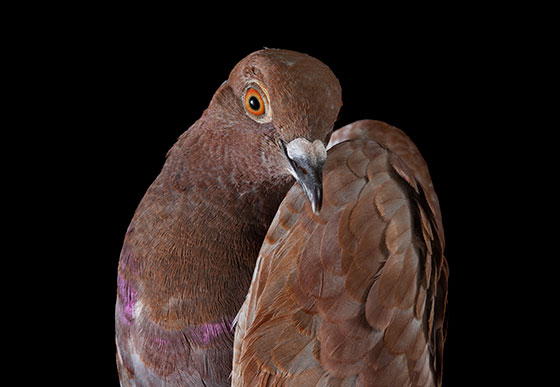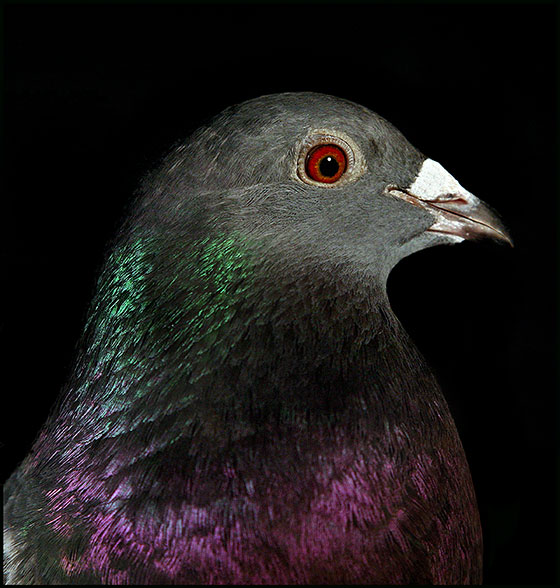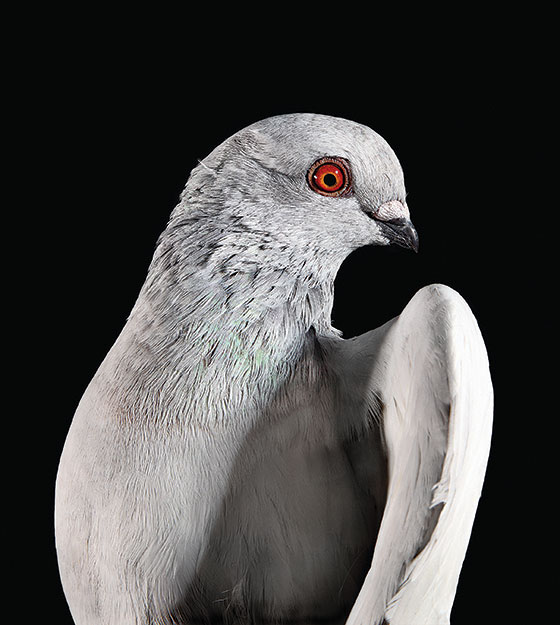
In 2008, photographer Andrew Garn was looking for a new subject, and “pigeons just seemed sort of unexplored, like, why not?” Over the next four years, he photographed about 5,000 of them at coops, homes, and the Wild Bird Fund, a rescue center. Up close, he found, “they’re really quite beautiful.” (An exhibit of his photographs is up at OK Harris through March 1.)
As it turns out, they’re also surprisingly complex. European settlers brought pigeons to North America in the early 1600s, to be kept in coops as a readily available food source. The birds are all part of the same species, Columba livia, though their colors and feather patterns vary widely. They’re “one of the most maneuverable birds in the world,” Garn says, agile enough to fly off on a dime—an adaptation likely going back to their origin on cliffsides, with no protection against predators. (They’re not so well prepared for extreme cold, however, which is why, in recent weeks, the Fund has seen a steep increase in the number of sick and dying in the city.) Their peripheral vision is extraordinary, as is their hearing. And they’re compassionate by design—both males and females secrete milk, and both will usually take in an abandoned baby. As for those babies, they’re well hidden within nests tucked into the nooks of city buildings, which is why, as has been noted, we never see them.
Garn also learned the less well-documented qualities of the birds: They like to be pet and held, and have a tendency to become bathed in grease under hot-dog stands.
